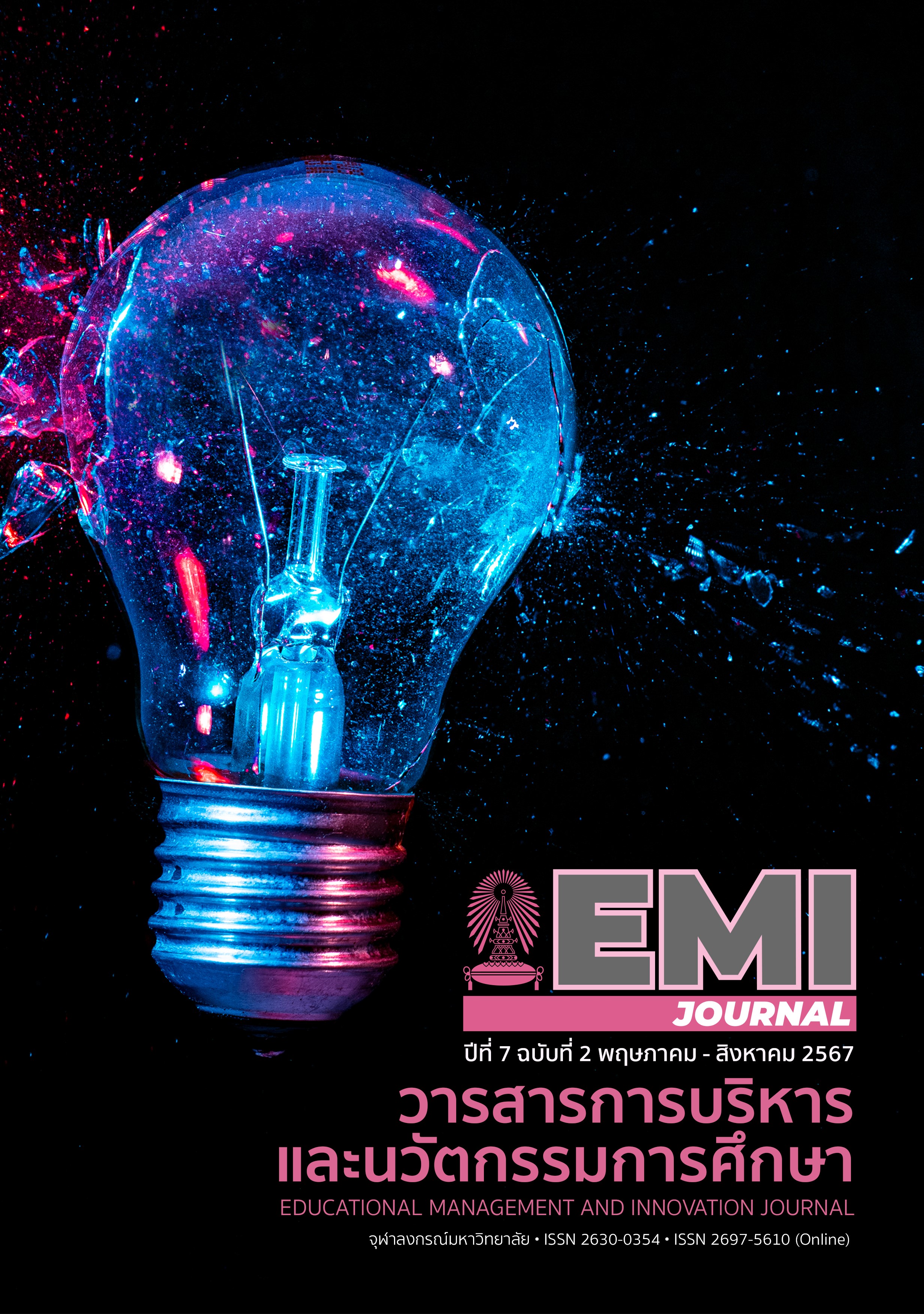The Needs of Developing a Private Secondary School Management According to The Concept of Student Voice
ความต้องการจำเป็นในการพัฒนาการบริหารโรงเรียนมัธยมศึกษาเอกชน ตามแนวคิดการมีส่วนร่วมที่มีคุณค่าของนักเรียน (Student Voice)
Keywords:
Student Voice, Private Secondary School ManagementAbstract
The objectives of this research were to study the priority need index of private secondary school management according to the concept of student voice. Data collected from 259 schools and total of 777 respondents comprising school administrator and teachers. The instruments used in this study were questionnaires. The data were analyzed by frequency, percentage, average, standard deviation and priority needs index (modified) (PNImodified).
The findings revealed that the current state of private secondary school management for according to the concept of student voice was at high level. The highest average of private secondary school management was student council organization and followed by learning management student development activities measurement and evaluation. The lowest average was school curriculum development. In addition, the desired state was at highest level. The highest average of private secondary school management was learning management and student council organization and followed by school curriculum development. The lowest average was measurement and evaluation and student development activities. The Overall priority needs index is .266 the priority was school curriculum development. The second priority needs index was measurement and evaluation student development activities learning management and the last priority needs index was student council organization. The research results can be used as a basis for curriculum development and learning management that promotes student voices in further school.
Downloads
References
Bahou, L. (2011). Rethinking the challenges and possibilities of student voice and agency. Educate~, 1(1), 2-14.
Benner, M., Brown, C., & Jeffrey, A. (2019). Elevating student voice in education. Center for American Progress. https://www.americanprogress.org/issues/education-k-12/reports/2019/08/14/473197/ elevating-student-voice-education
Chaemchoy, S., Siribanpitak, P., Usaho, C., Koraneekij, P., Petpon, P., & Chaimongkol, N. (2022). Policy design for transforming learning systems responsive to future global changes in Thailand 2040. Kasetsart Journal of Social Sciences, 43(2), 509-516.
Cook-Sather, A. (2006). Sound, presence, and power:“Student voice” in educational research and reform. Curriculum Inquiry, 36(4), 359-390.
De Vroey, A., Struyf, E., & Petry, K. (2016). Secondary schools included: a literature review. International journal of inclusive education, 20(2), 109-135.
Fletcher, A. (2012). Student voice and student engagement as Trojan horses. Connect (194), 24.
Gunter, H., & Thomson, P. (2007). Learning about student voice. Support for learning, 22(4), 181.
McMahon, B., Munns, G., Smyth, J., & Zyngier, D. (2012). Student engagement for equity and social justice: creating space for student voice.
Mitra, D. (2006). Increasing student voice and moving toward youth leadership. The prevention researcher, 13(1), 7-10.
Mitra, D. L., & Gross, S. J. (2009). Increasing student voice in high school reform: Building partnerships, improving outcomes. Educational Management Administration & Leadership, 37(4), 522-543.
Newmann, F. M. (1992). Student engagement and achievement in American secondary schools. ERIC.
NSW Department of Education, A. (2020). Student voice, participation and leadership. https://education. nsw.gov.au/student-wellbeing/student-voices/student-voice-and-leadership
Office of the Permanent Secretary, Ministry of Education. (2017). Educational Statistic 2017. Bangkok: Bureau of information and communication technology.
Office of Private Education Commission. (2022). Private Education statistic 2022. Retrieved March 10, 2022, from https://opec.go.th/stat
PimPa, P. (2018). Current Thai Studies. Academic Journal of Mahamakut Buddhist University Roi Et Campus, 7(1), 242-249.
Prime Minister’s Office. (2021). The National Economic and Social Development Plan Summary Edition. Bangkok: Office of the national economic and social development council.
Quaglia, R. J., & Fox, K. M. (2018). Student voice: A way of being. Australian Educational Leader, 40(1), 14-18.
Rudduck, J. (2007). Student voice, student engagement, and school reform. In International handbook of student experience in elementary and secondary school (pp. 587-610). Springer.
St John, K., & Briel, L. (2017). Student voice: A growing movement within education that benefits students and teachers. Center on Transition Innovations.
Suekrasae, T. (2013). Strategic Management of Private Schools for Excellence.
Toshalis, E., & Nakkula, M. J. (2012). Motivation, engagement, and student voice. Jobs for the Future Boston, MA.
UNESCO, I. (2020). Basic texts of the 2003 convention for the safeguarding of the intangible cultural heritage.
Downloads
Published
Issue
Section
License
Copyright (c) 2024 Educational Management and Innovation Journal

This work is licensed under a Creative Commons Attribution-NonCommercial-NoDerivatives 4.0 International License.
Idea and suggestion proposed in articles of EMI Journal belong to and stem from authors. Editor, editorial board, and EMI Journal committee are not and will not intervene authors’ standpoint. By this, the university, editor, and editorial board will not responsible for any consequence occurred by the present of author’s idea and suggestion publicized in the EMI journal.



